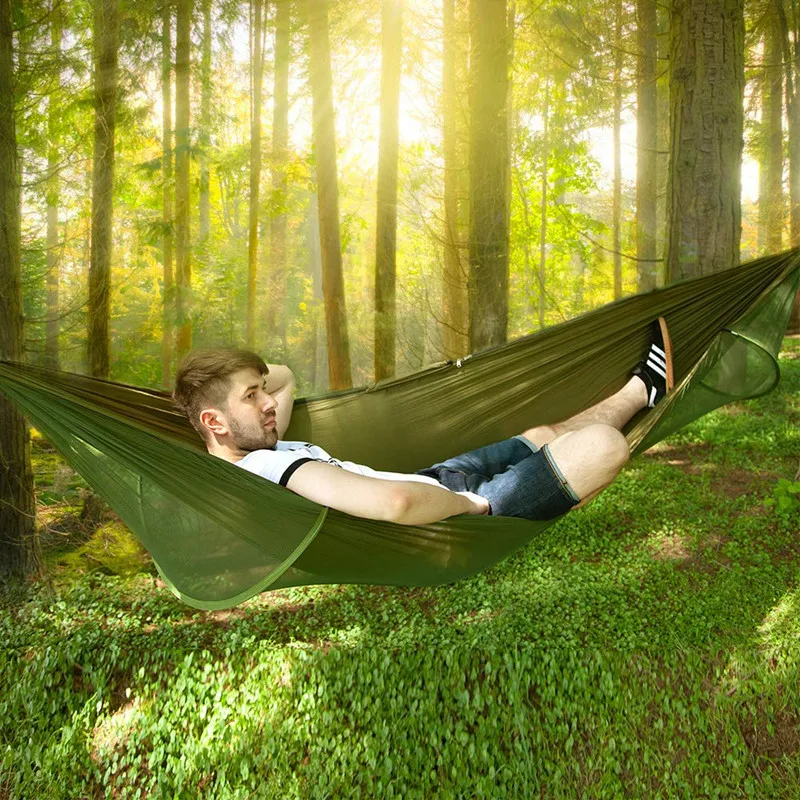
How do you pick the right style and surrounding equipment if you need to spend the night in a hammock? Hammocks and hanging ropes, warming equipment, and a canopy are the three types of equipment required for hammock camping. The following is the classification:
1. The body of the hammock
Taking a nap in a hammock is not the same as sleeping in one. Mosquito repellent, wind and rain safety, as well as low temperatures and warmth, must all be taken into account. This form of hammock requires a personal budget as well as the need for the hammock to be flexible. It also has much to do with the option of thermal equipment.
The body of a traditional gathered end hammock (gathered end hammock) is depicted in the diagram below. Sewing gauze, diaper hook points, pull points, fabric cutting, replaceable top cloth... and other practical designs have been applied to the basic structure of the gauze-free hammock by various brands.
BEST SELLER
2024 Camping Hammock with Mosquito Net Pop-Up Light Portable Outdoor Parachute Hammocks

a. Fronkey Trend Bugnet enters and exits from the bottom; it's a little tricky to set up, but it's simple to enter and exit.

b. Sock Design Bugnet sock gauze is easier to put up but more difficult to get in and out of (you need to push the gauze from one end to the other when you get in and out).
a. A simple gauze hammock with built-in support:

b. A multipurpose gauze hammock
Both sides have zippers for quick entry and exit, the gauze can be removed entirely, and a winter top cloth can be added to provide additional wind and cold cover. Since this type of top gauge hammock needs more complex work and has a wider variety of buying choices, it costs more than others.
Check this: Parachute Hammock with Straps and Black Carabiner
For the time being, the purpose of this article is restricted to folding hammocks; other types of hammocks (such as amok, bridge hammocks, Tentsile tree tents, and so on) so far is not discussed.
Shop more hammock in Camping Essentials

